
The Genesis of the Green: Tracing the Roots of Xbox – A Vision for the Living Room
The Xbox initiative wasn’t a spontaneous decision but rather a strategic response to a shifting technological and entertainment landscape in the late 1990s. Microsoft, a behemoth in the personal computer software industry, observed the burgeoning popularity of dedicated video game consoles, particularly Sony’s PlayStation. The concern wasn’t merely about market share in gaming; it was about the potential for these consoles to evolve into central hubs for home entertainment, potentially diminishing the PC’s role.
The core team behind the Xbox – Kevin Bachus, Seamus Blackley, Ted Hase, and Otto Berkes – envisioned a console that leveraged Microsoft’s software expertise and could compete head-to-head with the PlayStation. Their argument to Bill Gates wasn’t just about entering a new market; it was about defending Microsoft’s position in the digital future of the living room. They proposed a console built with familiar PC components, making it potentially more powerful and developer-friendly than its rivals. This bold proposition, initially met with some internal skepticism, eventually gained traction, leading to the birth of the Xbox project.

From PC to Console King: A Historical Odyssey of Xbox – Navigating Generations of Innovation
The journey of Xbox through its various iterations showcases Microsoft’s evolving strategy and its commitment to the gaming market:
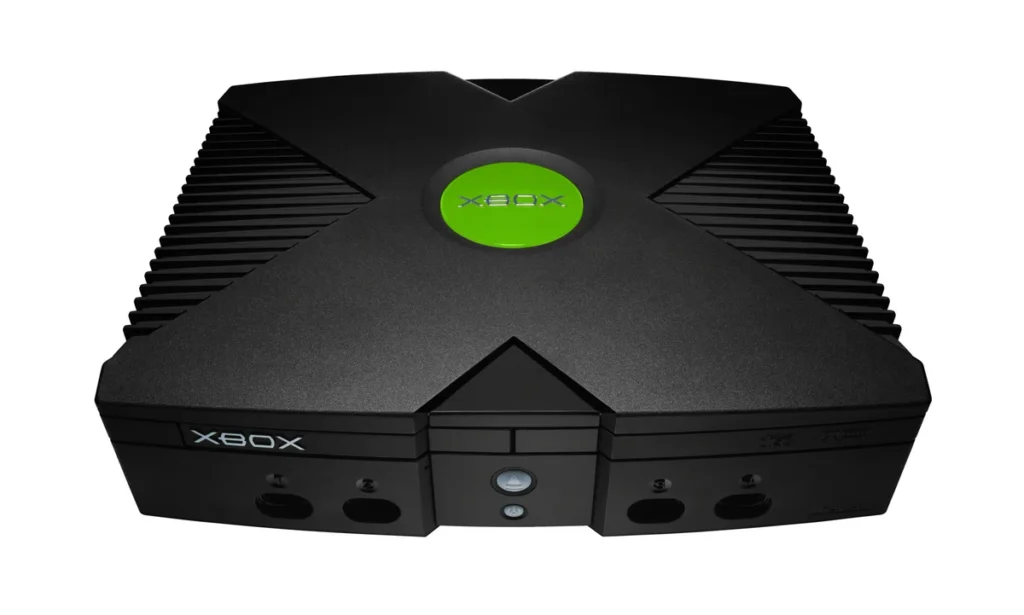
- The Original Xbox (2001-2005): A Powerful Debut with Online Ambitions
- The launch of the original Xbox was a statement. Its robust hardware, including a powerful Intel processor and NVIDIA graphics, often surpassed the capabilities of the reigning PlayStation 2. The integrated hard drive was a game-changer, simplifying game saves and paving the way for downloadable content. However, the most significant innovation was arguably Xbox Live. Launched a year after the console, Xbox Live established the blueprint for modern online console gaming with its unified matchmaking system, voice communication, and digital distribution. The success of Halo: Combat Evolved was instrumental in establishing the Xbox brand and attracting a dedicated fanbase. Despite its technical prowess and online innovation, the original Xbox faced an uphill battle against the PS2’s established dominance and ultimately occupied the second position in its generation.
- Xbox 360 (2005-2016): Defining the High-Definition Era and Embracing Multimedia
- The Xbox 360’s arrival in 2005 positioned Microsoft at the forefront of the high-definition gaming era. Its sleek design, powerful graphics capabilities (supporting 720p and 1080i resolutions), and integrated broadband connectivity made it an instant hit. Xbox Live matured into a comprehensive online ecosystem, offering a vast digital marketplace, social features, and a robust online multiplayer experience. The introduction of Kinect in 2010 broadened the console’s appeal beyond traditional gamers, exploring motion-based gaming. The Xbox 360 also cultivated a strong library of exclusive titles, including the critically acclaimed Gears of War and Forza Motorsport series. Despite the infamous “Red Ring of Death” hardware issues that plagued early models, the Xbox 360 became Microsoft’s most successful console to date, surpassing the PlayStation 3 in key markets and solidifying Xbox as a major force in the industry.
- Xbox One (2013-2020): An All-in-One Entertainment Vision and a Course Correction
- The launch of the Xbox One in 2013 marked a shift in Microsoft’s strategy, initially focusing on the console as a central hub for all home entertainment, including television integration. This messaging, coupled with controversial policies regarding used games and the mandatory inclusion of Kinect, was met with resistance from core gamers. While the Xbox One boasted powerful hardware and introduced innovative features like improved voice control and multitasking capabilities, it often trailed behind the PlayStation 4 in terms of raw graphical performance in cross-platform titles. However, Microsoft listened to feedback and gradually course-corrected, emphasizing gaming and introducing popular features like backward compatibility for Xbox 360 and original Xbox games. Despite a strong library of exclusive titles like Sunset Overdrive and the Ori series, the Xbox One ultimately sold fewer units than its primary competitor.
- Xbox One S (2016-Present) and Xbox One X (2017-2020)Mid-Generation Power-Ups
- Recognizing the evolving demands of gamers, Microsoft introduced mid-cycle hardware revisions. The Xbox One S offered a slimmer design, 4K Ultra HD Blu-ray playback, and HDR support, making it a more compelling media center. The Xbox One X, marketed as the most powerful console at the time, delivered a significant leap in processing power and graphical capabilities, enabling true 4K gaming for many titles. These iterations demonstrated Microsoft’s commitment to providing options for different needs and budgets within a console generation.
The Apex of Power: Exploring the Latest and Greatest Xbox Consoles – Ushering in Next-Gen Gaming
The Xbox Series X and Xbox Series S, launched in November 2020, represent Microsoft’s vision for the future of console gaming, emphasizing high fidelity, speed, and accessibility for a wider audience.
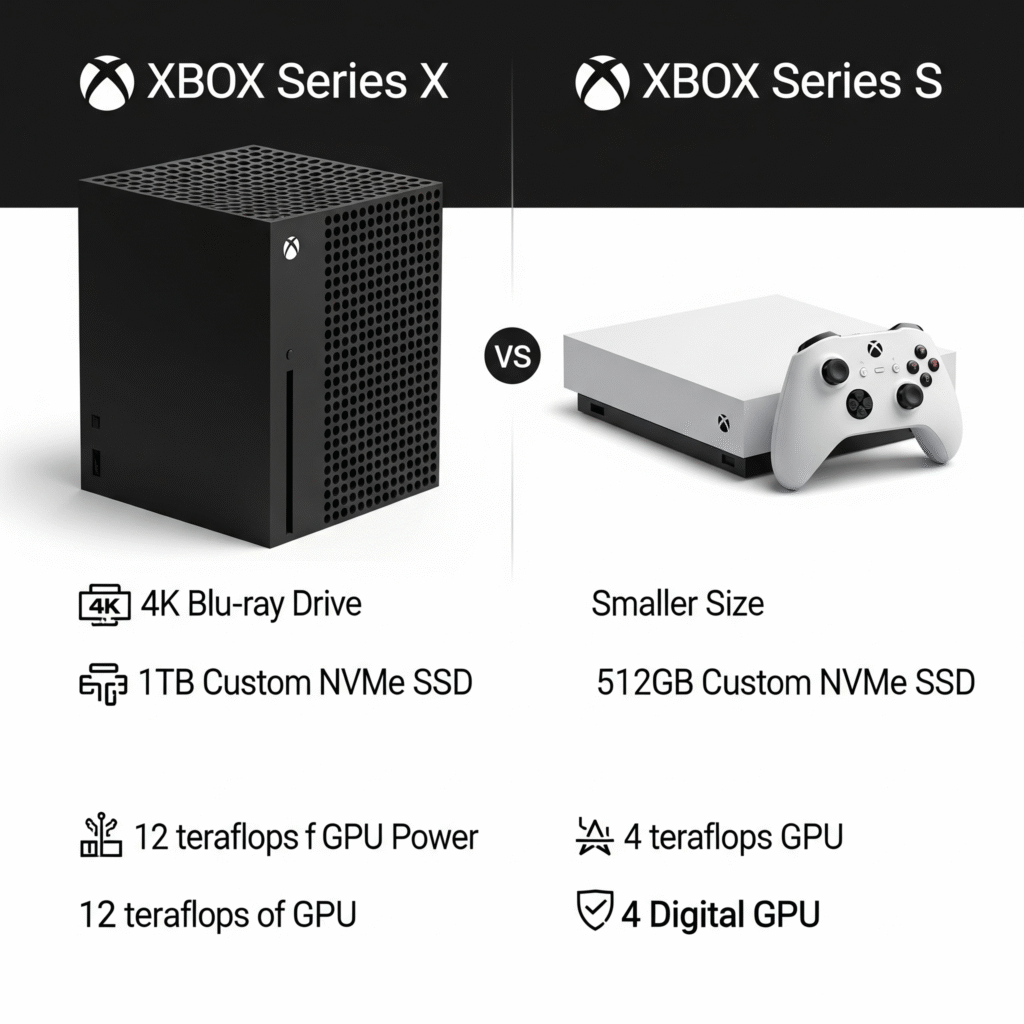
Xbox Series X vs. Xbox Series S: Decoding the Current Generation – Power and Accessibility
Determining which of the latest Xbox consoles is “best” requires a nuanced understanding of individual gaming preferences and financial considerations:
- Xbox Series X: The Uncompromising Powerhouse
- Positioned as the flagship console, the Xbox Series X is engineered for peak performance. Its custom AMD Zen 2 processor, coupled with a significantly more powerful AMD Radeon RDNA 2 GPU boasting 12.15 teraflops of processing power, allows for stunning visuals at native 4K resolution and smooth frame rates up to 120fps. The substantial 16GB of GDDR6 RAM ensures seamless multitasking and the ability to handle complex game worlds. The inclusion of a 1TB custom NVMe SSD, further expandable with proprietary cards, drastically reduces loading times and enhances overall system responsiveness. The built-in 4K UHD Blu-ray disc drive caters to players who prefer physical media for games and movies. For gamers who demand the absolute best in graphical fidelity, performance, and the option to play physical games, the Xbox Series X stands as the superior choice.
- Xbox Series S: The Accessible Gateway to Next-Gen
- The Xbox Series S offers a more budget-friendly entry point into the current generation of Xbox gaming. While it shares the same cutting-edge CPU architecture and lightning-fast NVMe SSD (initially 512GB, with a 1TB version released in 2023) as the Series X, it features a less powerful GPU (4 teraflops) and less RAM (10GB GDDR6). Consequently, it targets a resolution of 1440p at up to 120fps. As a digital-only console, it forgoes a disc drive, requiring users to purchase games digitally through the Xbox Store. The Series S is an ideal option for gamers who prioritize affordability, are comfortable with a digital game library (especially through the Xbox Game Pass ecosystem), and still want to experience the benefits of next-generation features like significantly reduced loading times and Quick Resume. Its smaller physical footprint also makes it appealing for those with limited space.
Both the Xbox Series X and Series S are unified by a shared ecosystem and core features:
- Xbox Velocity Architecture
- This innovative architecture tightly integrates the custom NVMe SSD with specialized hardware and software, enabling features like Quick Resume (instantly switching between multiple suspended games) and significantly faster loading times compared to previous generations.
- Extensive Backward Compatibility
- Both consoles boast impressive backward compatibility, allowing players to enjoy a vast library of Xbox One games, as well as a curated selection of Xbox 360 and original Xbox titles, often with performance and visual enhancements.
- The Power of Xbox Game Pass
- This subscription service remains a central pillar of the Xbox ecosystem, offering access to hundreds of games for a monthly fee, including all of Microsoft’s first-party titles on day one of release. This provides immense value and encourages exploration of a diverse range of games.
- Smart Delivery
- This convenient feature ensures that players always receive the best version of a supported game optimized for their specific Xbox console (Series X or Series S) without needing to purchase it separately.
In conclusion, while the Xbox Series X undeniably holds the title of the “best” Xbox in terms of raw processing power and features, the Xbox Series S provides a compelling and more accessible pathway into the current generation, particularly for digital-focused gamers on a budget.
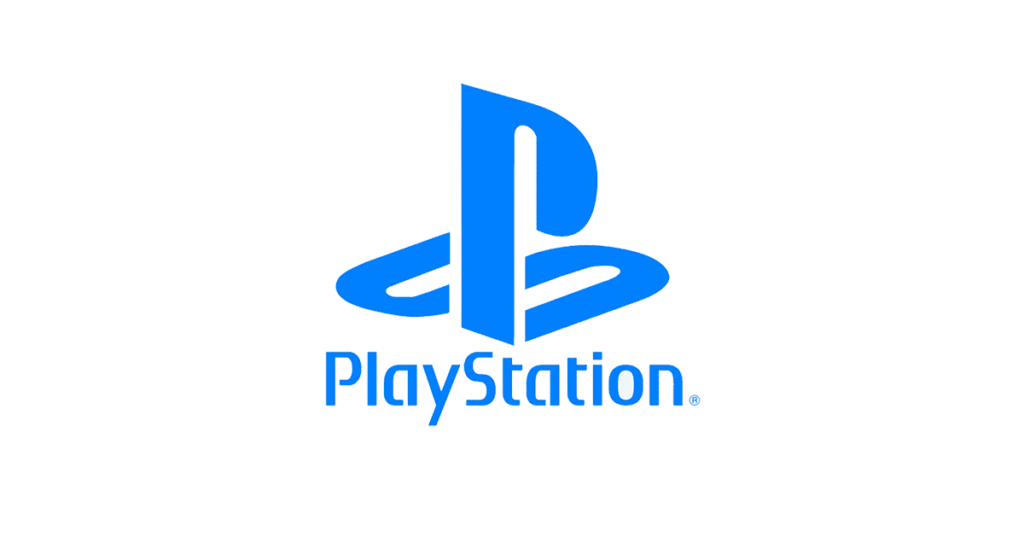
PLAYSTATION: Entering Sony’s Realm of Interactive Entertainment – A Legacy of Innovation
Beyond Gaming: The Unexpected Origins of the PlayStation Legacy – A Twist of Fate
The genesis of the PlayStation was far from a straightforward corporate initiative. It emerged from a derailed partnership with Nintendo, a seemingly disastrous event that ultimately paved the way for Sony’s monumental success in the video game industry. Ken Kutaragi, then an engineer at Sony, had been secretly working with Nintendo on a CD-ROM add-on for the Super Nintendo Entertainment System (SNES). This collaboration, known as the “Play Station,” held the promise of expanding the SNES’s capabilities with CD-based media, offering significantly more storage and richer multimedia experiences than traditional cartridges.
However, as the project neared completion, internal conflicts and concerns within Nintendo regarding Sony’s growing influence led to a dramatic and public cancellation of the partnership at the 1991 Consumer Electronics Show. This unexpected betrayal could have been a setback, but for Kutaragi and Sony, it served as a catalyst. Instead of abandoning the project, they decided to forge ahead independently, retaining the “PlayStation” name. This audacious move marked Sony’s unexpected and ultimately triumphant entry into the fiercely competitive video game console market, a decision that would reshape the industry forever.
From CD Revolution to Global Phenomenon: A Historical Journey of PlayStation – Shaping the Gaming Landscape
The PlayStation brand’s journey through its various consoles showcases Sony’s consistent innovation and its deep understanding of the evolving needs and desires of gamers:
- PlayStation (1994-2006): The CD Era and the Rise of 3D Gaming
- The original PlayStation’s arrival in the mid-1990s was a watershed moment. Its adoption of CD-ROM technology was a significant departure from the cartridge-based systems of its main competitors, Nintendo and Sega. CDs offered vastly greater storage capacity, enabling developers to create more complex games with richer soundtracks, voice acting, and more detailed graphics, including the burgeoning field of 3D polygonal graphics. The PlayStation’s hardware was specifically designed to excel in rendering 3D environments, leading to the rise of new genres and gameplay experiences. Sony actively cultivated relationships with third-party developers, resulting in a diverse and groundbreaking library of games that appealed to a broader audience. Iconic franchises like Gran Turismo, Final Fantasy VII, Metal Gear Solid, and Tekken were born on the PlayStation, solidifying its place in gaming history and selling over 100 million units worldwide. Sony’s marketing was also groundbreaking, targeting a slightly older demographic and positioning the PlayStation as a sophisticated entertainment device.
- PlayStation 2 (2000-2013): The Undisputed King and a Multimedia Powerhouse
- Launched at the dawn of the new millennium, the PlayStation 2 achieved unprecedented commercial success, becoming the best-selling video game console of all time with over 155 million units sold. Its success wasn’t solely attributed to its gaming prowess. The inclusion of a DVD player at a time when standalone DVD players were still relatively expensive positioned the PS2 as a versatile home entertainment hub, attracting a wider audience beyond core gamers. While its technical specifications weren’t always the most cutting-edge, its unique architecture allowed for impressive graphical fidelity and innovative gameplay. The PS2 boasted an unparalleled library of games across every conceivable genre, featuring numerous critically acclaimed and commercially successful titles such as Grand Theft Auto: San Andreas, Final Fantasy X, Metal Gear Solid 3: Snake Eater, Shadow of the Colossus, and God of War. While online gaming existed on the PS2, it wasn’t as seamlessly integrated as Xbox Live initially. Nevertheless, the PS2’s vast game library, multimedia capabilities, and cultural impact cemented its legendary status.
- PlayStation Portable (PSP) (2004-2014): Sony’s Foray into Handheld Gaming
- In 2004, Sony entered the handheld gaming market with the PlayStation Portable (PSP), aiming to deliver a console-quality gaming experience on the go. Its sleek design, vibrant widescreen LCD, and powerful hardware made it a compelling alternative to Nintendo’s dominant DS. The PSP utilized Universal Media Discs (UMDs) for games and movies, further emphasizing its multimedia capabilities. It boasted a strong library of games, including portable iterations of popular PlayStation franchises and original titles. While technically impressive, the PSP faced challenges from the dual-screen innovation of the DS and later from the rise of smartphone gaming.
- PlayStation 3 (2006-2017): The Blu-ray Bet and the Rise of PlayStation Network
- The PlayStation 3’s launch in 2006 was marked by its advanced technology, including a built-in Blu-ray disc player, a bold move that ultimately paid off as Blu-ray became the dominant high-definition optical disc format. The PS3 also featured HDMI output as standard, supporting high-definition resolutions. The PlayStation Network (PSN) was significantly expanded, offering free online multiplayer (initially), a robust digital storefront (PlayStation Store), and a range of digital services. The PS3’s Cell processor was a powerful but complex piece of hardware, sometimes posing challenges for developers. While its initial launch price was higher than its main competitor, the Xbox 360, the PS3 eventually built a formidable library of exclusive titles, including critically acclaimed games like The Last of Us, Uncharted, God of War III, and Metal Gear Solid 4: Guns of the Patriots, contributing to its eventual success with over 87 million units sold.
- PlayStation Vita (2011-2019): A Powerful but Challenged Handheld Successor
- The PlayStation Vita, launched in 2011/2012, was a technologically advanced handheld console featuring a high-resolution OLED touchscreen, a rear touchpad, and dual analog sticks, offering a more traditional console-like control scheme than many of its competitors. However, it faced challenges in gaining widespread adoption due to factors such as the high cost of proprietary memory cards and increasing competition from the burgeoning smartphone and tablet gaming market. Despite a dedicated fanbase and some excellent exclusive titles, the Vita’s commercial success was limited compared to its predecessor.
- PlayStation 4 (2013-Present): A Focus on Core Gaming and Developer Empowerment
- The PlayStation 4, launched in 2013, marked a strategic shift back towards a primary focus on core gaming experiences and fostering strong relationships with game developers. Its more industry-standard x86 architecture made it easier for developers to create and port games. The PS4 enjoyed a strong launch lineup and continued to build an impressive library of critically acclaimed and commercially successful exclusive titles, including Marvel’s Spider-Man, God of War (2018), Horizon Zero Dawn, The Last of Us Part II, and Ghost of Tsushima. The PlayStation Plus subscription service became mandatory for online multiplayer and offered significant value through monthly free games and discounts. The PS4’s strong performance and focus on delivering high-quality gaming experiences cemented PlayStation’s market leadership in this generation, selling over 117 million units.
The Zenith of Play: Discovering the Latest and Best PlayStation Consoles – Embracing the Future of Gaming
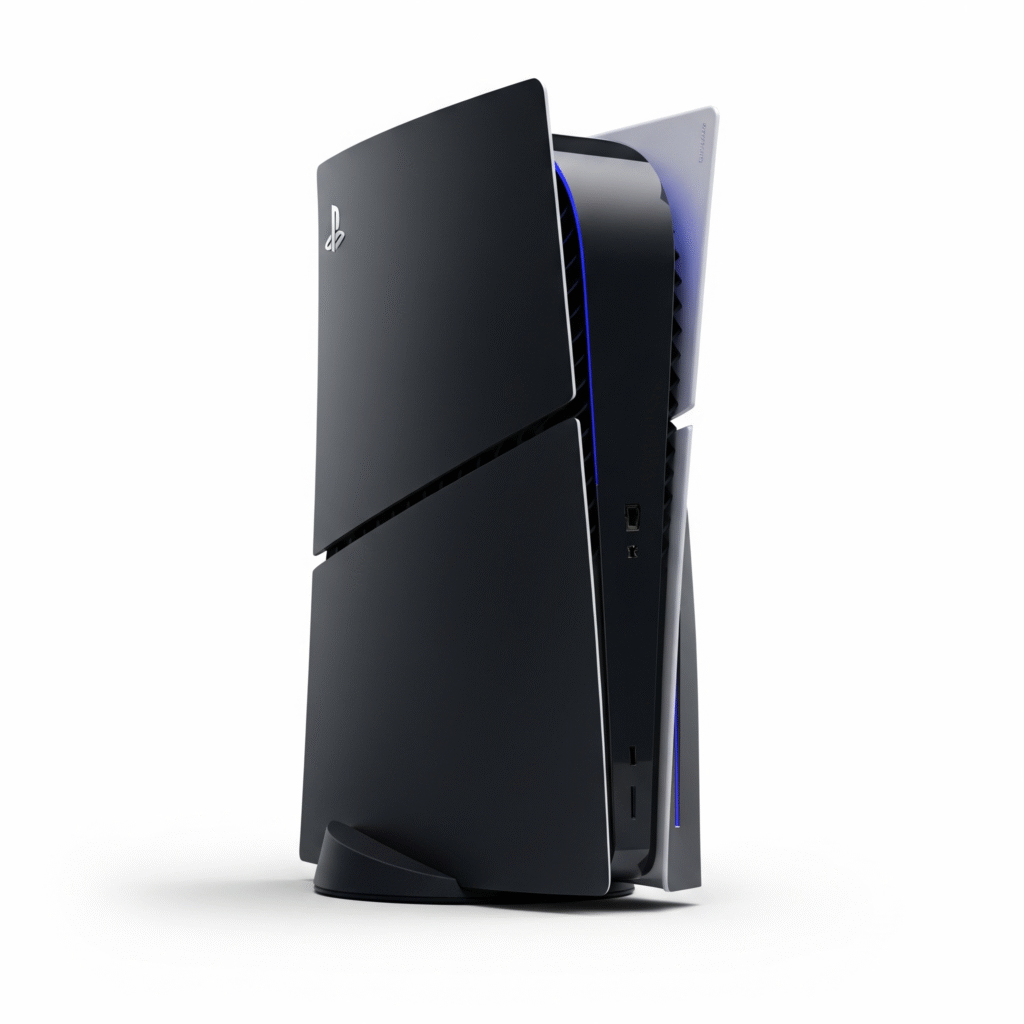
The PlayStation 5, launched in November 2020, represents Sony’s latest and most ambitious step into the future of console gaming, prioritizing unprecedented speed, heightened immersion, and innovative features designed to redefine the player experience.
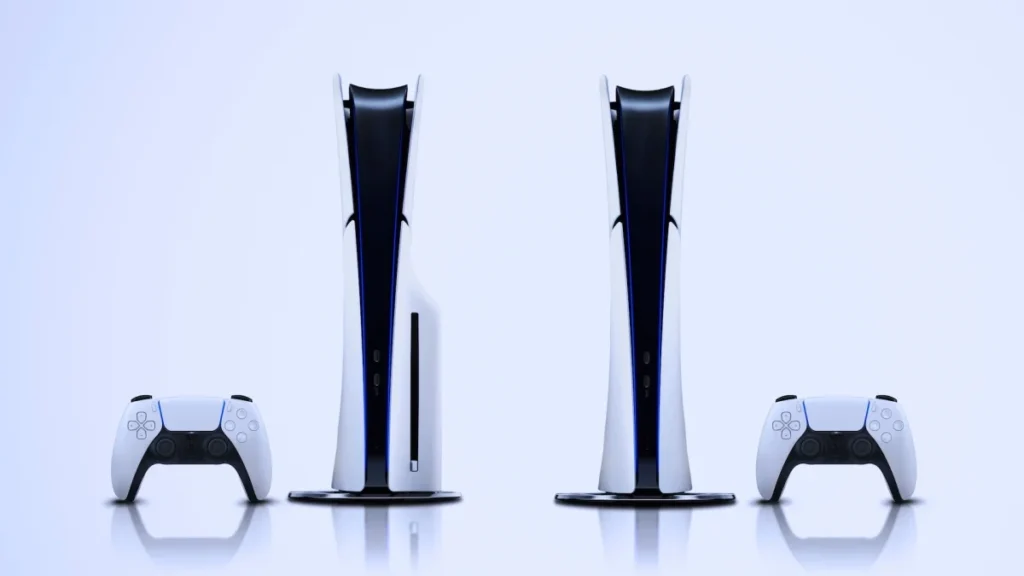
PlayStation 5 vs. PlayStation 5 Digital Edition/Slim: Understanding the Current Offerings – Choice and Performance
Similar to its competitor, the PlayStation 5 is available in multiple configurations to cater to different consumer preferences and budgets:
- PlayStation 5 (with Ultra HD Blu-ray disc drive)
- This is the standard model, featuring a built-in disc drive that allows users to play both physical and digital games, as well as watch 4K Ultra HD Blu-ray movies. This offers maximum flexibility and caters to those who prefer to own physical copies of their games.
- PlayStation 5 Digital Edition
- This version is identical in internal specifications to the standard PS5 but omits the disc drive. It is designed for players who primarily purchase and play digital games through the PlayStation Store. This model typically comes with a slightly lower initial price point.
- PlayStation 5 Slim (with detachable Ultra HD Blu-ray disc drive or Digital Edition)
- Released in late 2023, the PS5 Slim offers a physically smaller and lighter design compared to the original PS5 models. It is available as a Digital Edition or with an Ultra HD Blu-ray disc drive. Notably, the disc drive on the Slim model is detachable and can be purchased separately for the Digital Edition, offering users the flexibility to add physical media capabilities later.
All PS5 models share the same powerful internal hardware, ensuring a consistent and high-fidelity gaming experience:
- Custom AMD Zen 2 processor
- Delivering significant processing power for smooth gameplay and system responsiveness.
- Custom NVMe SSD with Integrated I/O
- This ultra-fast solid-state drive and its unique architecture dramatically reduce loading times, often making them virtually instantaneous. This has a transformative impact on game flow and design.
- AMD Radeon RDNA 2-based GPU with Ray Tracing
- Providing exceptional graphical performance, supporting 4K resolution at up to 120 frames per second, and featuring hardware-accelerated ray tracing for incredibly realistic lighting, shadows, and reflections.
- 16GB GDDR6 RAM
- Ensuring ample memory for smooth performance and handling complex game environments.
- Innovative DualSense Controller
- This controller is a defining feature of the PS5, offering immersive haptic feedback that simulates a wide range of tactile sensations and adaptive triggers that can provide varying levels of resistance, enhancing the feeling of in-game actions like drawing a bow or braking a car.
- Backward Compatibility
- The PS5 is backward compatible with the vast majority of PlayStation 4 games, allowing players to enjoy their existing libraries on the new hardware.
Considering the versatility offered by the inclusion of a disc drive (or the option to add one on the Slim model), the PlayStation 5 (with Ultra HD Blu-ray disc drive or the PS5 Slim with the drive) can be considered the “best” option for most users, providing the widest range of media compatibility. However, the Digital Edition and Slim Digital Edition
Xbox vs PlayStation The Battle OF Beasts
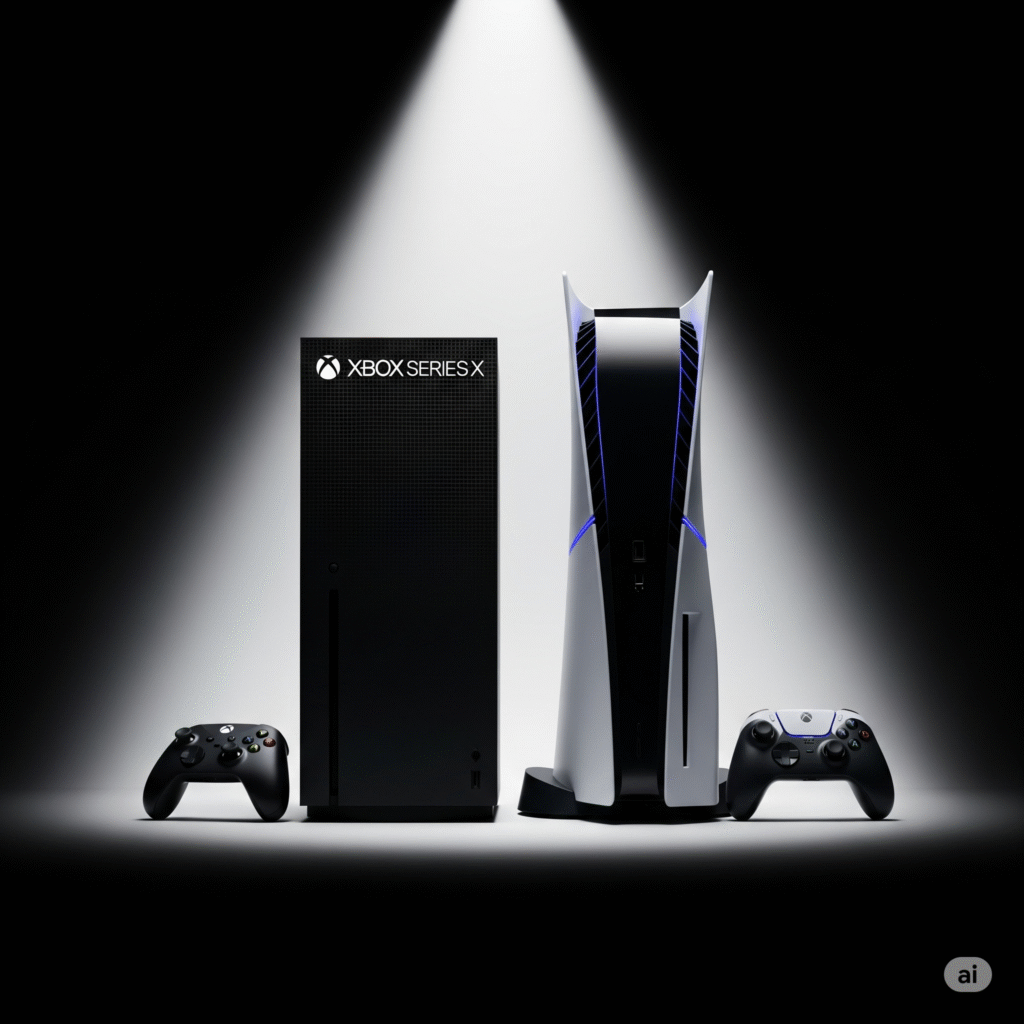
Xbox Series X compared to the PlayStation 5 (with disc drive or PS5 Slim with disc drive). Both are extremely powerful consoles that provide next-gen gaming. The following are a summary of their strengths:
Xbox Series X
Raw Power: On paper, the Series X wins out by a hair in raw GPU processing power (12.15 teraflops to the PS5’s 10.28 teraflops).
Backward Compatibility: Offers broader backward compatibility, such as the original Xbox and Xbox 360 games, and Xbox One games.
Xbox Game Pass: A strong subscription service that boasts an enormous game library with day-one releases of Microsoft first-party games.
Dolby Vision Gaming: Includes Dolby Vision for more vivid HDR images in supported games and on supported TVs.
Less Costly (in some regions): Previously, the Xbox Series X has occasionally been available a bit cheaper than the base PS5 in some regions.
PlayStation 5 (with disc player or PS5 Slim with disc player):
Innovative Controller: The DualSense controller with its adaptive triggers and haptic feedback offers a far more immersive and distinctive gaming experience.
Ultra-Fast SSD: The PS5’s proprietary SSD design is very quick, frequently leading to faster loading times than the Series X in real-world testing.
Solid First-Party Exclusives: The PlayStation brand enjoys a solid reputation for possessing quality, award-winning first-party exclusive titles.
User Interface: Most users have described the PS5 user interface as more modern and welcoming. PlayStation VR2: Provides a specialized next-generation virtual reality experience (additional purchase required).
Which is Better Overall?
There is no absolute “best” between the Xbox Series X and the PlayStation 5. The superior one depends solely on personal priorities:
For those who value raw power, extreme backward compatibility, and value proposition of Xbox Game Pass, the Xbox Series X is the best option.
For players who value new controller technologies, fast loading, and playing premium exclusive games, the PlayStation 5 is a possible choice. In the end, the two consoles provide incredible gaming experiences and entry to the overwhelming majority of the same multi-platform titles. Such considerations as controller feel preference, ecosystem commitment, and the draw of exclusive game libraries will be the tipping point. If budget is an important factor and a digital-only library works, the Xbox Series S and PlayStation 5 Digital Edition/Slim Digital Edition provide cheaper entry into the next generation